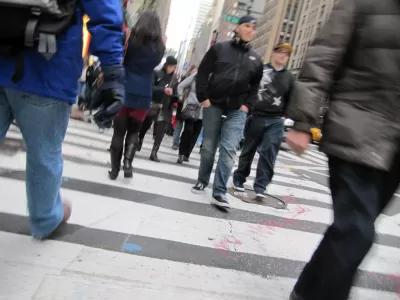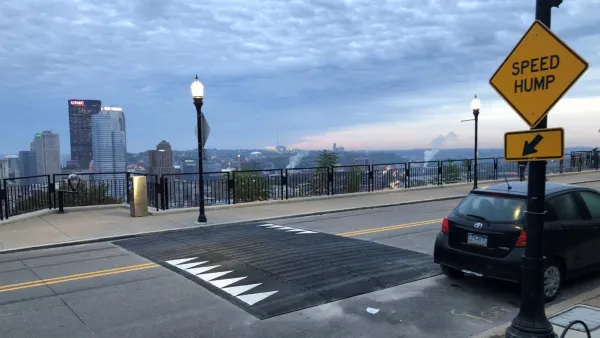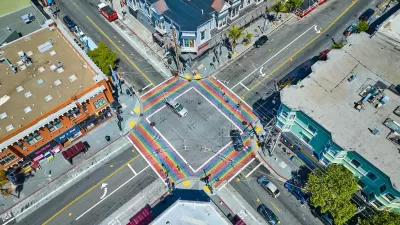While not yet widely implemented in the United States, scramble intersections make life considerably safer and easier for pedestrians and drivers.

Rachel Quednau discusses the benefits of pedestrian scrambles, using her current hometown of Cambridge, Massachusetts, as an example. The intersections allow pedestrians to cross in any direction while keeping cars from turning. They work especially well, says Quednau, in areas with lots of pedestrians and on stroads, the street-road hybrids that can be treacherous for pedestrians to cross:
For me and my fellow walkers, it’s far more efficient to be able to safely cross to the diagonal corner of a street in a matter of seconds, protected by a light, than to fearfully wait for a break in traffic to dart across. It also seems more efficient for cars to then travel through the intersection on a green light without needing to worry about interactions with pedestrians during their trip.
She also argues that pedestrian scrambles are cost effective to put in, requiring only the adjustment of intersection signals and some public education about how to use them. In addition, she says that while the research on pedestrian scrambles is relatively scant, what is available suggests that the intersections do improve public safety.
FULL STORY: A Pedestrian Scramble Can Make an Intersection Safer For Everyone

Planetizen Federal Action Tracker
A weekly monitor of how Trump’s orders and actions are impacting planners and planning in America.

Congressman Proposes Bill to Rename DC Metro “Trump Train”
The Make Autorail Great Again Act would withhold federal funding to the system until the Washington Metropolitan Area Transit Authority (WMATA), rebrands as the Washington Metropolitan Authority for Greater Access (WMAGA).

DARTSpace Platform Streamlines Dallas TOD Application Process
The Dallas transit agency hopes a shorter permitting timeline will boost transit-oriented development around rail stations.

Fungi to the Rescue: How Mushrooms Are Helping Clean Up Toxic Lands
Fungi are emerging as powerful tools in environmental cleanup, with scientists and community leaders using mushrooms to break down pollutants and restore contaminated soil.

DC, Columbus Bike Share Fleets Introduce Cargo Bikes
Shared mobility is ‘growing up,’ with rental options increasingly expanding to include e-bikes, scooters, and cargo bikes.

Five Key Transportation Funding Proposals in Trump’s Budget
The President’s proposed 2026 budget would keep spending roughly the same for transit and rail and eliminate over $5 billion in funding for EV charging infrastructure.
Urban Design for Planners 1: Software Tools
This six-course series explores essential urban design concepts using open source software and equips planners with the tools they need to participate fully in the urban design process.
Planning for Universal Design
Learn the tools for implementing Universal Design in planning regulations.
City of Charlotte
Municipality of Princeton
Roanoke Valley-Alleghany Regional Commission
City of Camden Redevelopment Agency
City of Astoria
Transportation Research & Education Center (TREC) at Portland State University
US High Speed Rail Association
City of Camden Redevelopment Agency
Municipality of Princeton (NJ)





























